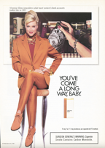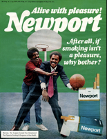Millions of people who struggle with cigarette addiction wonder how they became so dependent on smoking or why they ever started in the first place. The answer is not as simple as personal choice—it’s the result of a decades-long, highly calculated campaign by the tobacco industry to manipulate consumers into becoming lifelong smokers.
Tobacco companies were fully aware of the devastating health risks posed by nicotine and other harmful chemicals in cigarettes. Still, they deliberately used a range of creative marketing strategies to keep luring new customers while obfuscating the truth about the dangers of smoking. For those already addicted, it was too late.
An executive at tobacco Brown and Williamson, makers of such brands as Carlton, Lucky Strike, and Kool, said it best: “Nicotine is addictive. We are, then, in the business of selling nicotine, an addictive drug.” Even after the link between smoking and lung cancer was established, tobacco companies pushed ahead with their aggressive marketing campaigns. According to an article published in The Tobacco Journal in 1955, “There is no obstacle to large-scale sales of tobacco products that cannot be surmounted by aggressive selling.”
Big Tobacco has poured millions of dollars into advertising and promotion—the five largest cigarette manufacturers spent $8.01 billion in 2022 alone—and in-depth psycho-social research studies to determine the best way to entice people to smoke. The Stanford Research into the Impact of Tobacco Advertising (SRITA) collection currently contains 62,553 tobacco advertisements.
And it worked. Here are just some of the claims made by Big Tobacco over the years that got people hooked:
“Smoking is Healthy!”
In the earliest days of tobacco advertising companies claimed outright that smoking had health benefits, even suggesting that it could help alleviate ailments such as “asthma, bronchitis, hay fever, influenza, and shortness of breath.” A 1931 Chesterfield ad went so far as to state that its cigarettes were “just as pure as the water you drink,” claiming scientific proof of their healthfulness.



As ridiculous as these early claims seem now, touting these supposed health benefits got people to try a product that many subsequently became addicted to.
As public awareness of smoking’s harm spread, tobacco companies began promoting products as “less harmful,” marketing cigarettes with low tar, low nicotine, and filters that supposedly reduced health risks. One of the most insidious tactics was medical endorsements with doctors depicted as enthusiastic smokers in ads, such as the famous “More Doctors Smoke Camels” campaign. This portrayal of medical professionals continued well into the 1990s, when white-coated models appeared in Kool cigarette ads, reinforcing the false narrative of smoking’s safety.




When the 1964 Surgeon General’s Report came out on the dangers of smoking, executives at Big Tobacco knew they had to fight back. Internal communications at the highest levels at Philip Morris International stated: “We must in the near future give smokers a psychological crutch and a self-rationale to continue smoking.”
“Smoking is Cool!”
Tobacco companies have long used their ads to make smoking seem like a symbol of coolness and rebellion, linking smoking to traits like independence, confidence, and freedom. Iconic campaigns featured rugged cowboys, adventurous explorers, or smooth, charismatic figures portraying smoking as part of a carefree, bold lifestyle.
Who can forget the Marlboro Man, named the top advertising icon of the century by Advertising Age in the 1990s, highlighting the character’s pivotal role in making smoking seem cool and desirable? Other brands promoted their products with mascots and cartoon characters like Joe Camel, an easygoing, “smooth character” who embodied a cool vibe that resonated with teens and young people.




Around the same time, tobacco companies introduced vibrant “positive lifestyle” images and imagery of smoking in high-status settings to make smoking seem not only cool but also socially acceptable and even part of a healthy lifestyle. This carefully crafted image played a major role in normalizing smoking and influencing generations to see it as an essential part of a “cool” identity.




“Smoking is Glamorous!”
Smoking has long been associated with glamour due to strategic endorsements by prominent movie and TV stars, athletes, and even politicians. Tobacco companies were great at leveraging the cross-promotional power of Hollywood, using its stars and classic films to elevate the image of smoking.
Movie icons like Audrey Hepburn’s Holly Golightly and Sean Connery’s James Bond were often depicted as effortlessly glamorous while smoking, their chic and sophisticated on-screen personas reinforcing the allure of cigarettes. Publicity images that included cigarette brands and ads featuring celebrity endorsements created an irresistible association between smoking and the glamorous lifestyles of the rich and famous. This carefully cultivated image made cigarettes seem key to achieving style and status.




“Smoking is Empowering!”
Some ads made smoking seem like a form of empowerment for women, tying it to ideas of independence, equality, and strength. Ads portrayed women who smoked as confident, bold, and unafraid to break away from traditional gender roles, showing them in powerful or glamorous roles—like successful professionals or daring adventurers. Big Tobacco positioned smoking as a way to express strength and sophistication, making it seem like lighting up was a way for women to claim their independence and embrace a changing world.




“Smoking is Tasty!”
Tobacco companies have long claimed that their cigarettes taste better than others, often touting their unique blends of tobacco, promising a smoother, richer taste or a “milder” smoke. Some even went so far as to claim their cigarettes were specially crafted to offer a cleaner, more refined flavor. These marketing tactics played on the idea that smoking was not just an addiction but an enjoyable, sensory experience.



Menthol cigarettes were positioned as a smoother, cooler alternative to regular cigarettes. The minty flavor makes the cigarettes “easier” to use, and because of this, the industry acknowledged them as great “starter products.” The sad truth is that menthol enhances nicotine’s addictiveness.
Menthol numbs the cough reflex, which allowed even people who were sensitive to regular cigarettes to take up smoking, another example of how Big Tobacco actively sought to “recruit” more smokers. Marketing of menthol cigarettes was heavily targeted towards African Americans since studies showed that 85% of these smokers preferred menthol cigarettes.




No, It’s Not Your Fault You’re Addicted
The long history of manipulation and deceit in tobacco advertising has left millions of people with lifelong nicotine addictions and, tragically, serious health conditions like lung cancer. Big Tobacco’s deliberate efforts to start and keep people smoking—including young people, teens, and even children—despite knowing the deadly consequences, has resulted in a public health crisis that continues to affect millions today.
Contact a Tobacco Litigation Lawyer Today
If you or a loved one has developed lung cancer as a result of a smoking addiction, you may be entitled to financial compensation. Read more about some of the most frequently asked questions about tobacco litigation in Massachusetts and whether it’s possible to get financial compensation for your lung cancer caused by smoking. If you’d like to know whether you might have a legitimate claim, reach out to our tobacco lawyers at Shepard O’Donnell for a free case evaluation. Please note that at this time, we are only taking cases in which the majority of the patient’s smoking history took place in Massachusetts.
Shepard O’Donnell does not own copyright in these images, and does not offer or license them for public or private use. As to copyright issues for tobacco advertisements, they have been reproduced with regularity in books, scholarly journals, popular magazines, and in numerous online venues for many years for purposes of comment, criticism, or parody, which may be considered transformative and thus considered fair use.









